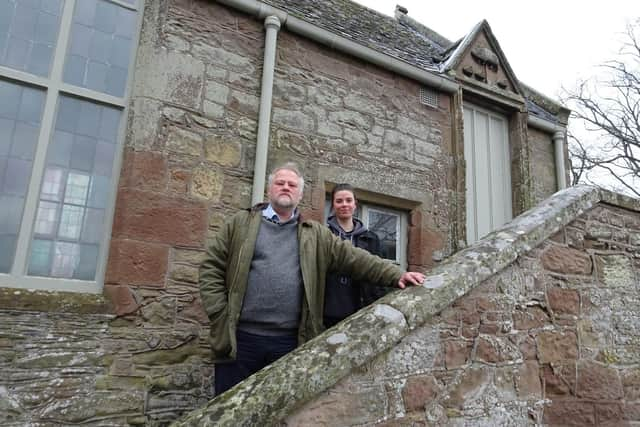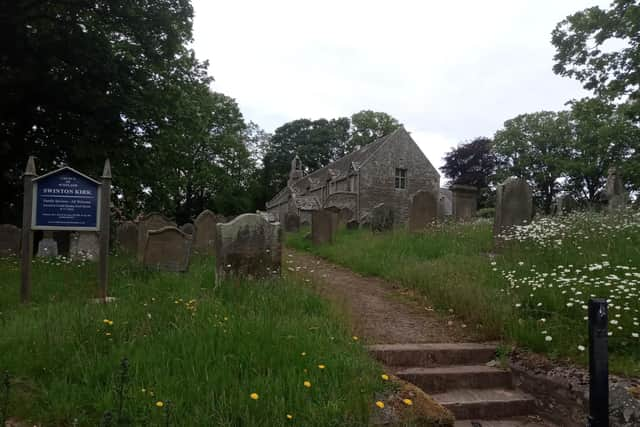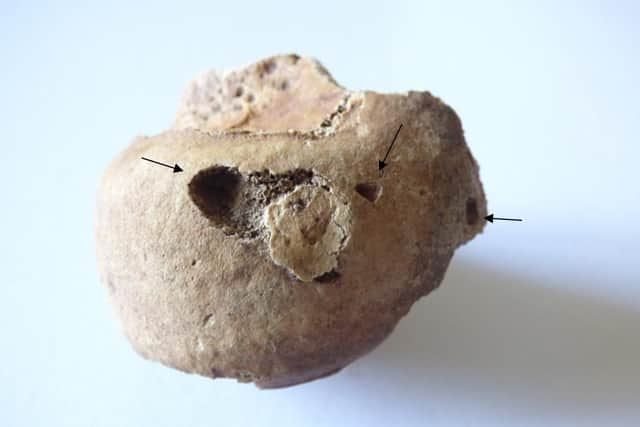Recovered historic human remains at site near Berwick provide insight into area's violent past
and live on Freeview channel 276
During its monitoring of utilities work in the kirkyard of Swinton Parish Church, archaeology contractors Border Reivers Archaeology Unit recovered human remains which expert assessments have shown to have suffered multiple injuries around the time of death.
The church was first built in stone after 1100 and was significantly altered in 1593. Alterations in the eighteenth and nineteenth centuries were followed by major repairs in 1910 by the renowned Scottish architect Sir Robert Lorimer, who added an innovative underground heating chamber.
Advertisement
Hide AdAdvertisement
Hide AdThe kirk at Swinton is thought to have been used as a refuge during the border raids, which took place in the Anglo-Scottish wars and the time of the Border Reivers.


The disturbed human remains, which were painstakingly recovered from the earth along the route of a cable trench by eagle-eyed archaeologists, included 124 bone fragments and two loose teeth. While this may sound like a lot, an adult skeleton has 206 bones and an infant skeleton consists of 270 bone elements in a cartilage model.
All of the bones from Swinton accounted for a minimum of five individuals – two adults and three subadults (younger than adult).
Even though a relatively small sample was recovered, the osteoarchaeologists (specialists in human bone) did not have to look long for signs of trauma. Two fragments of lower leg bone showed sharp force trauma (blade wounds) which were made peri-mortem (around the time of death).
Advertisement
Hide AdAdvertisement
Hide AdThese wounds show no signs of healing, which indicates they were made just before someone died, or just after they died. Injuries to bone made during life look different under close examination when compared to bones which may have been damaged after death.


An archaeologist from the Border Reivers Archaeology Unit said: “Living human bone has a completely different consistency and texture from dead bone. The living bone is more like a very hard dense wax or wood and is not as brittle as dead bone, it breaks and cuts in a completely different way.”
One leg bone had three separate sharp force trauma cuts – two made in the same direction, one of which has penetrated right through the bone into the central cavity, and a third cut in the opposite direction.
These are thought to have been made with a bladed weapon similar to an axe or sword, of which there were quite a variety on the border. Another leg bone had been cut once in a similar way.
Advertisement
Hide AdAdvertisement
Hide AdOne of the slashed shin bones and another thigh bone had teeth marks on them, showing that they had been bitten and gnawed by a large canid (dog or wolf) whose teeth had punctured the bone.


This kind of damage typically happens when bodies have been left unburied after a battle or massacre, which were common on the Borders until the end of the sixteenth century.
That one of the bones has both sharp force trauma and canid gnawing on it suggests that this is the most likely explanation.